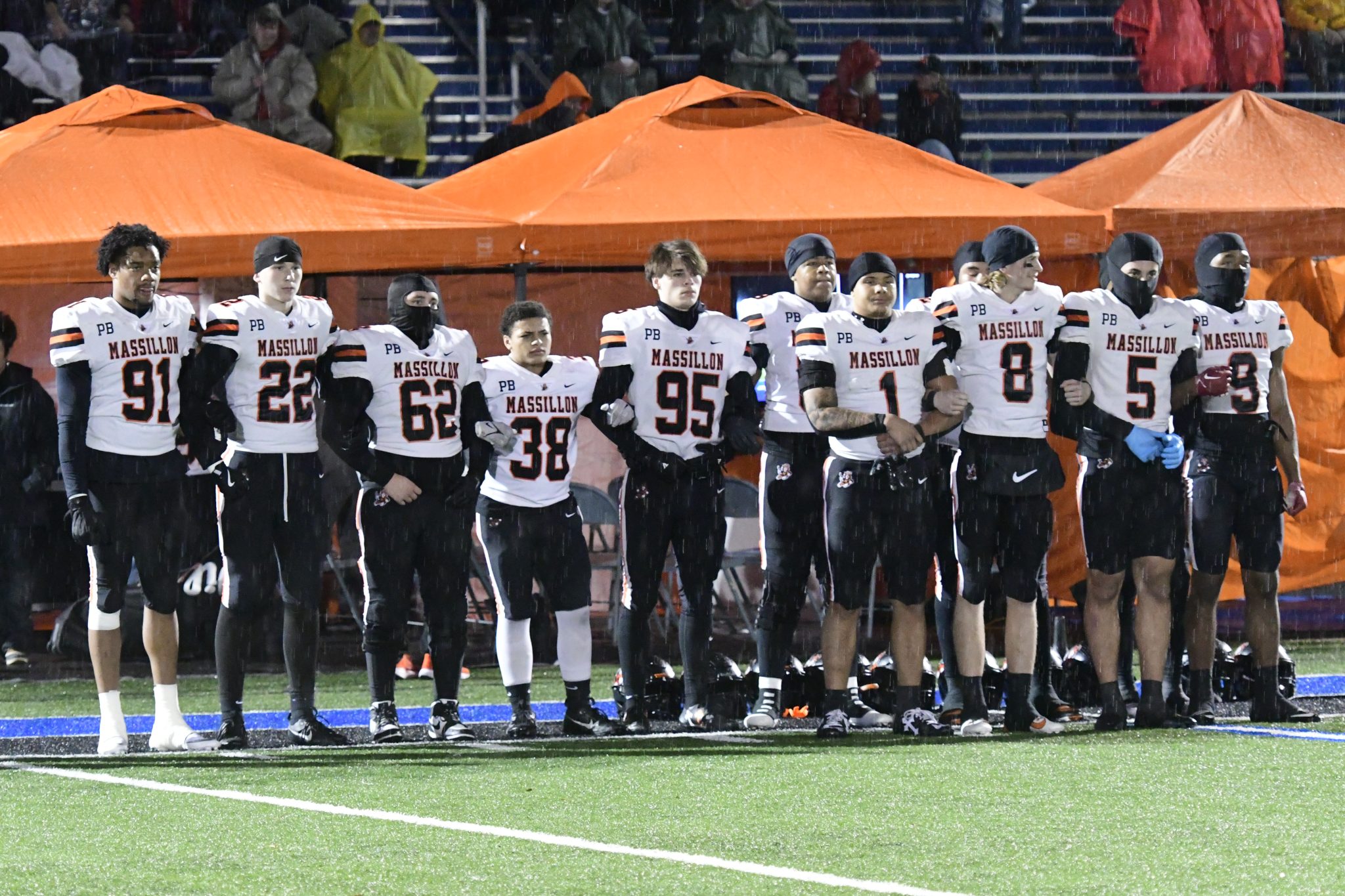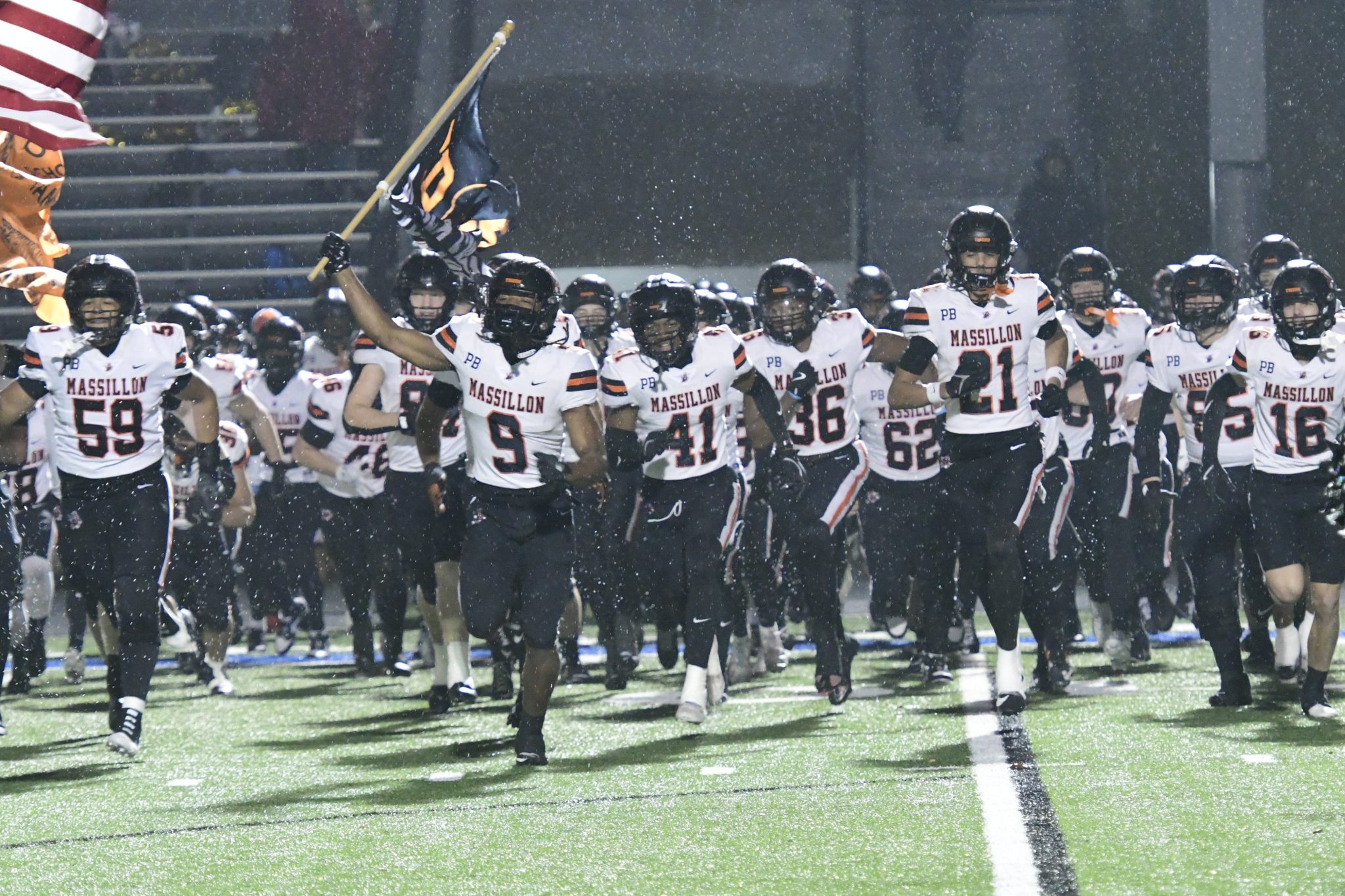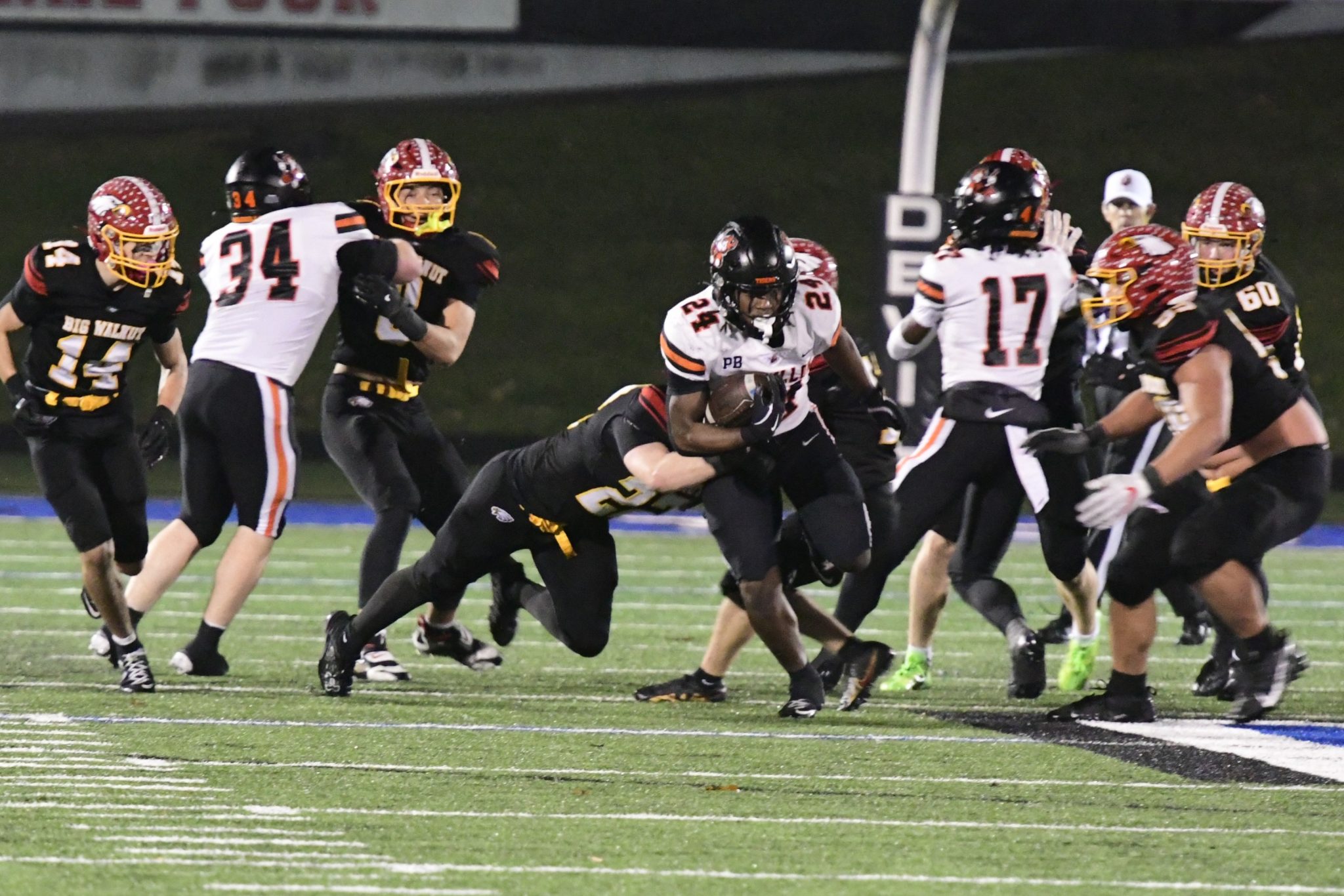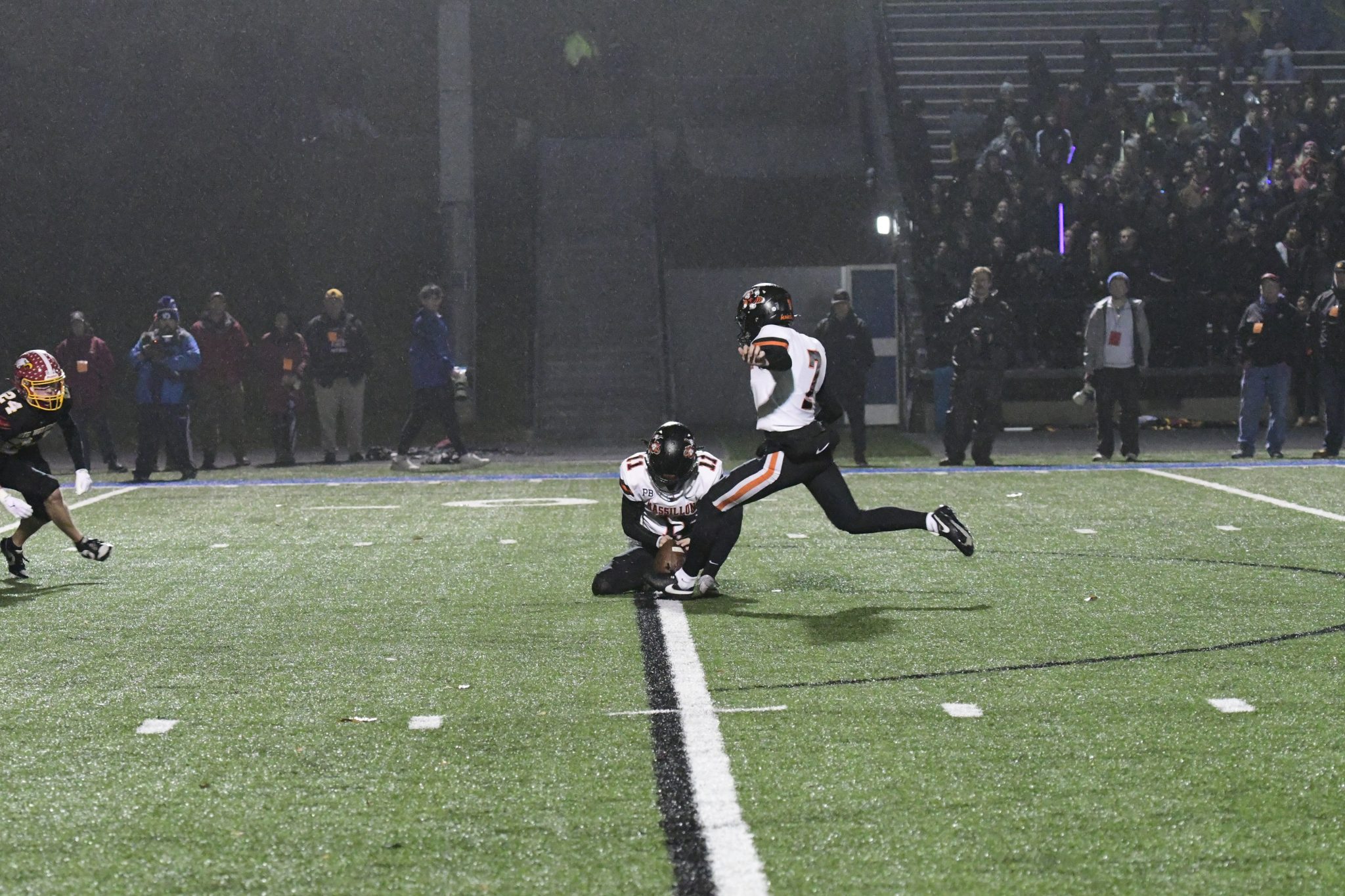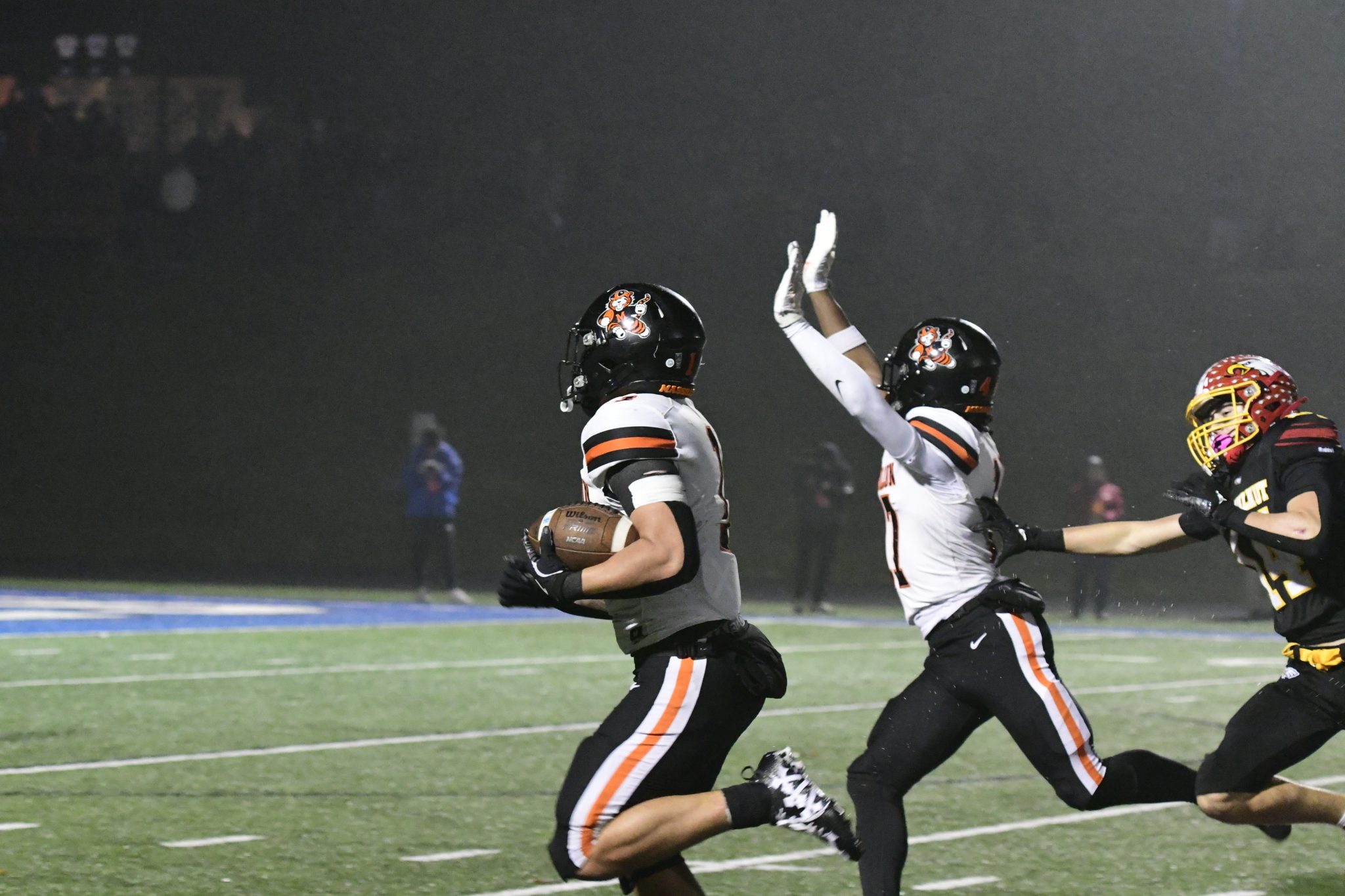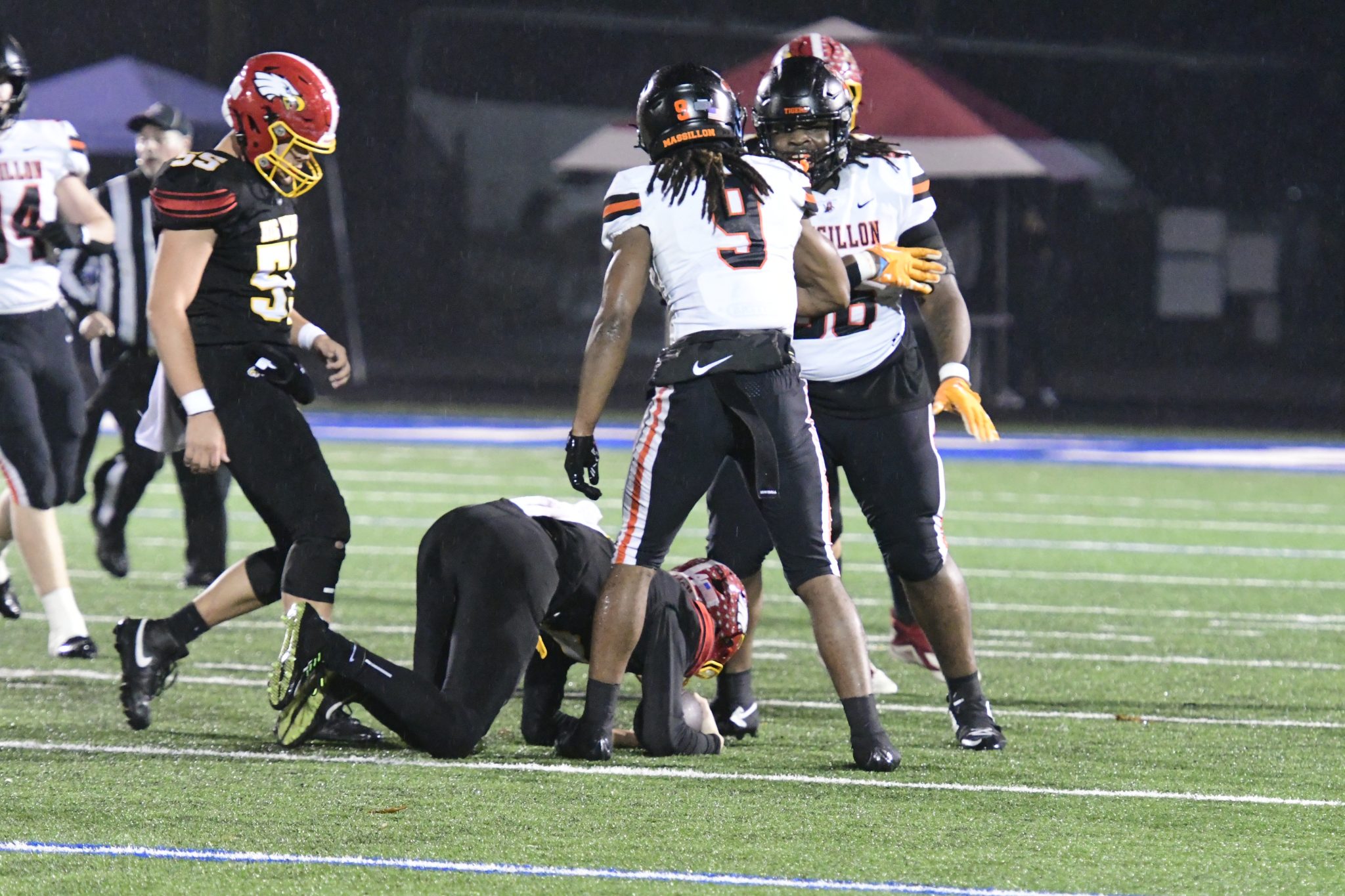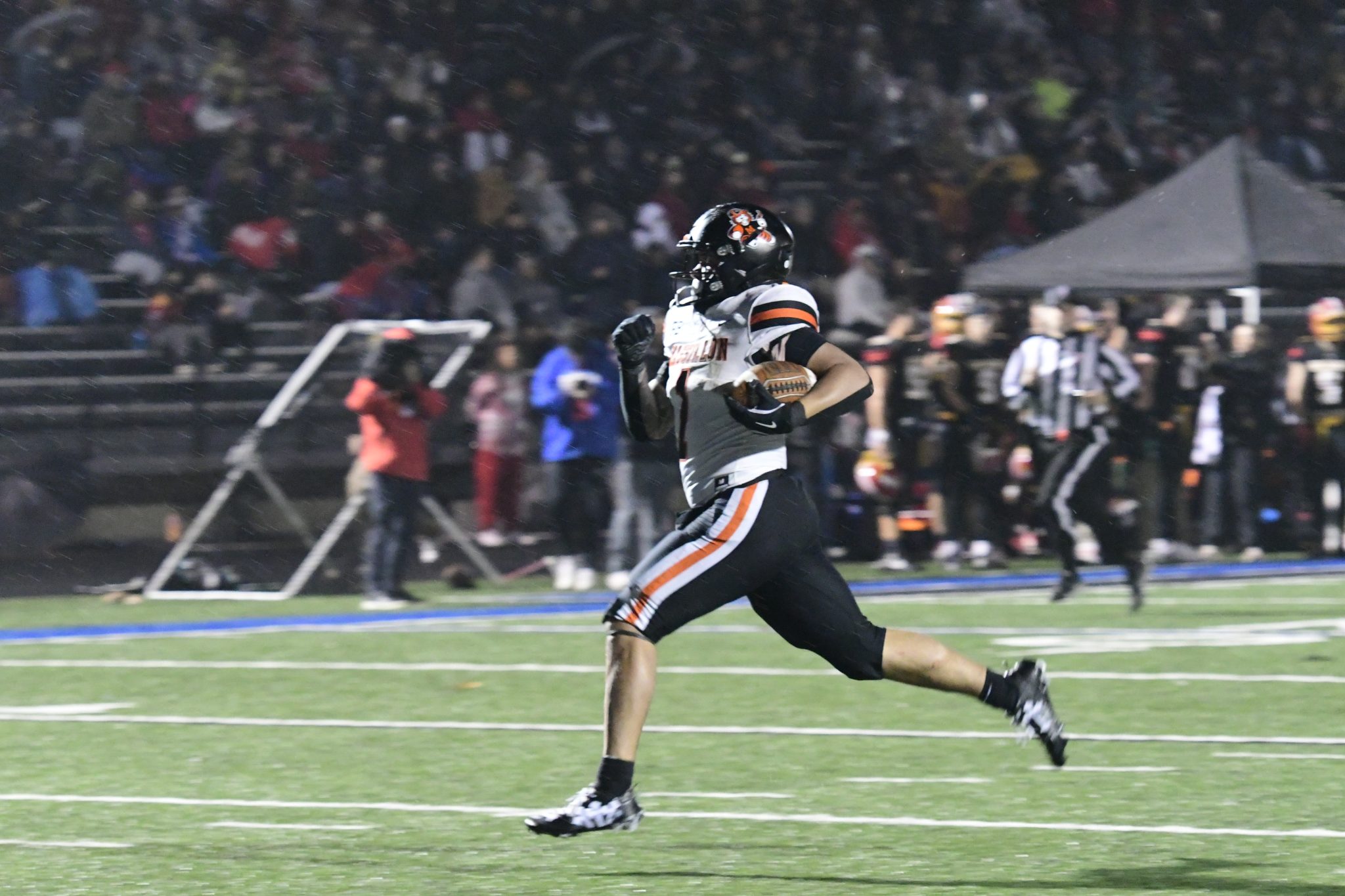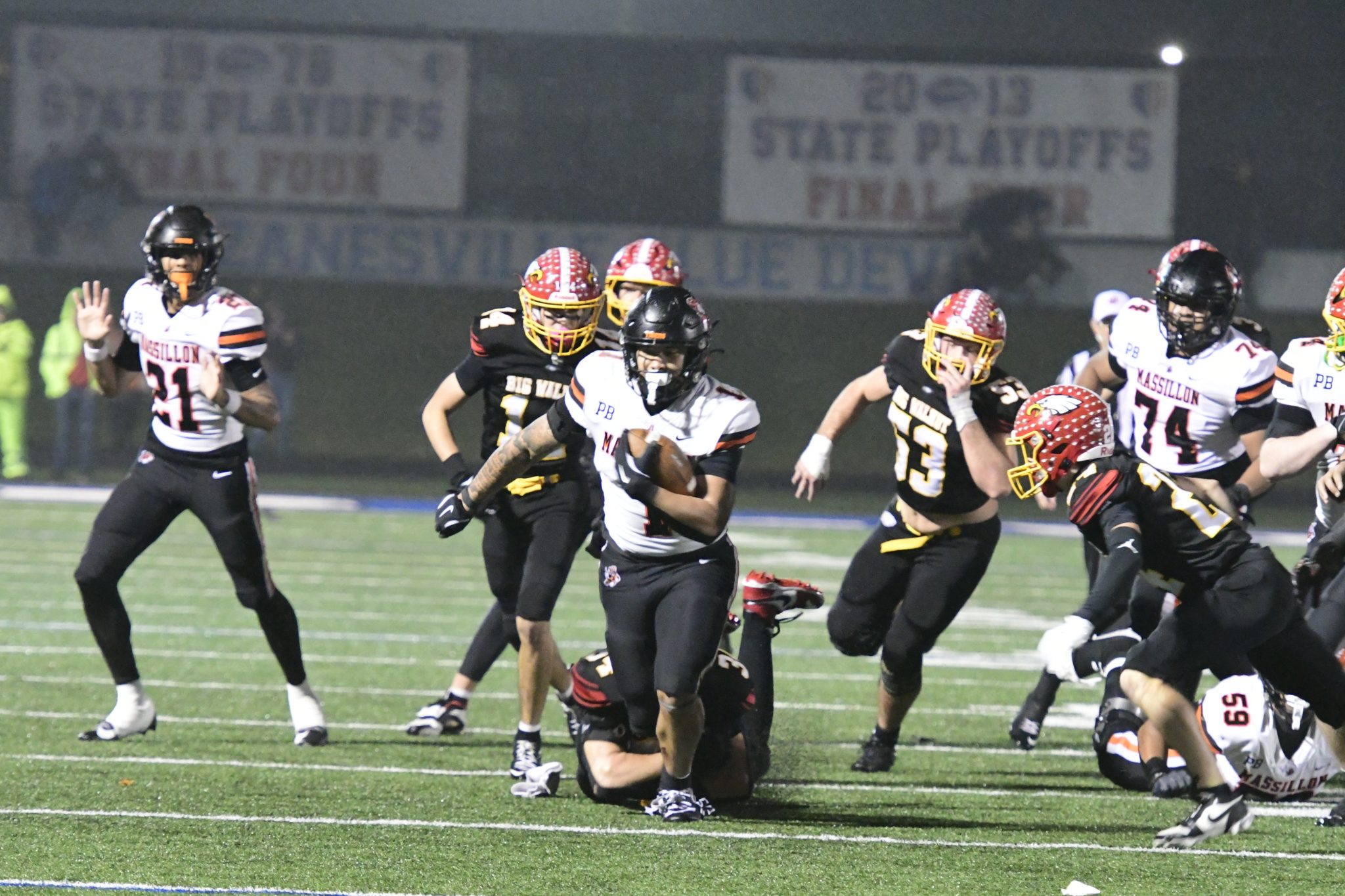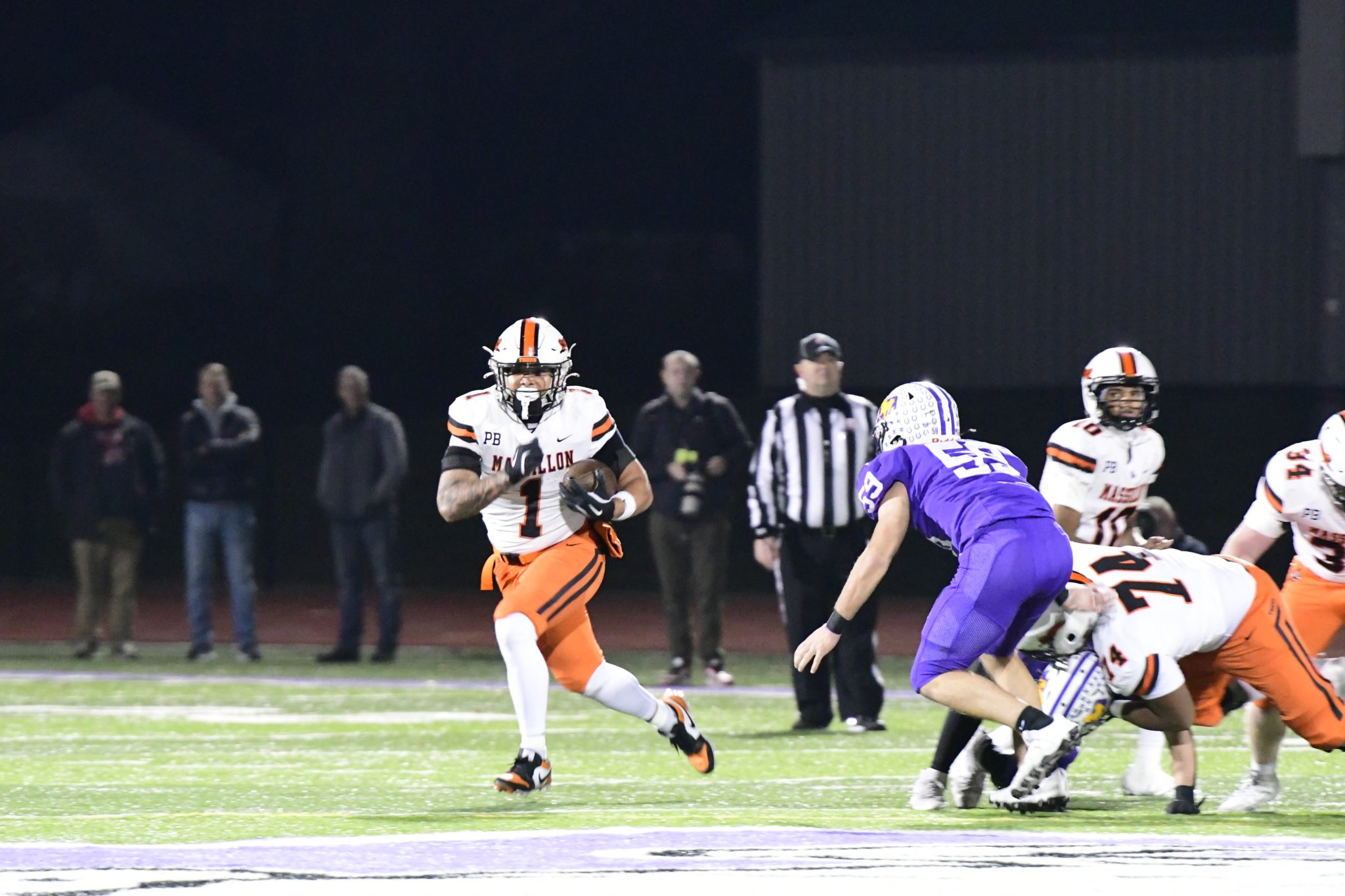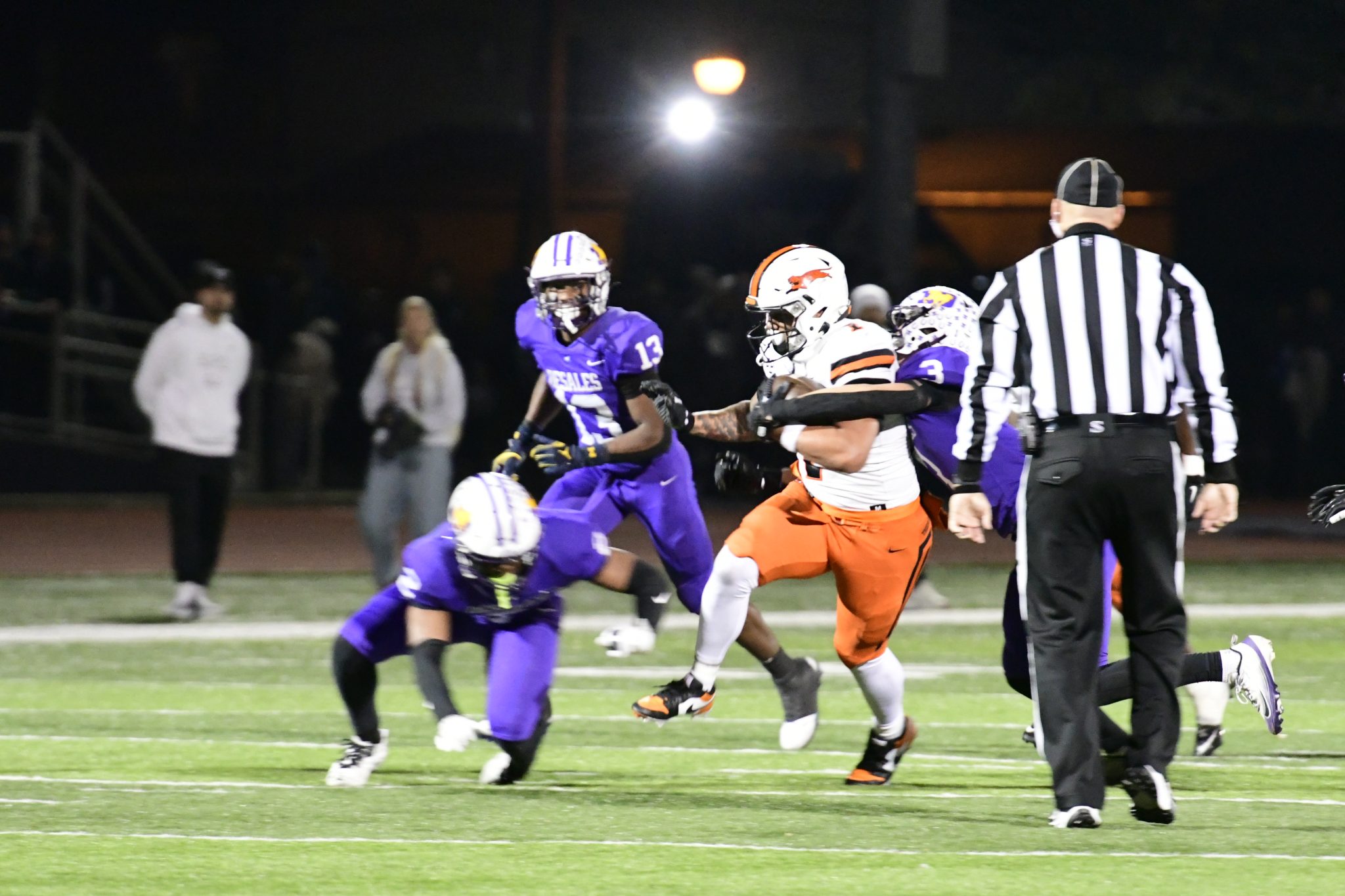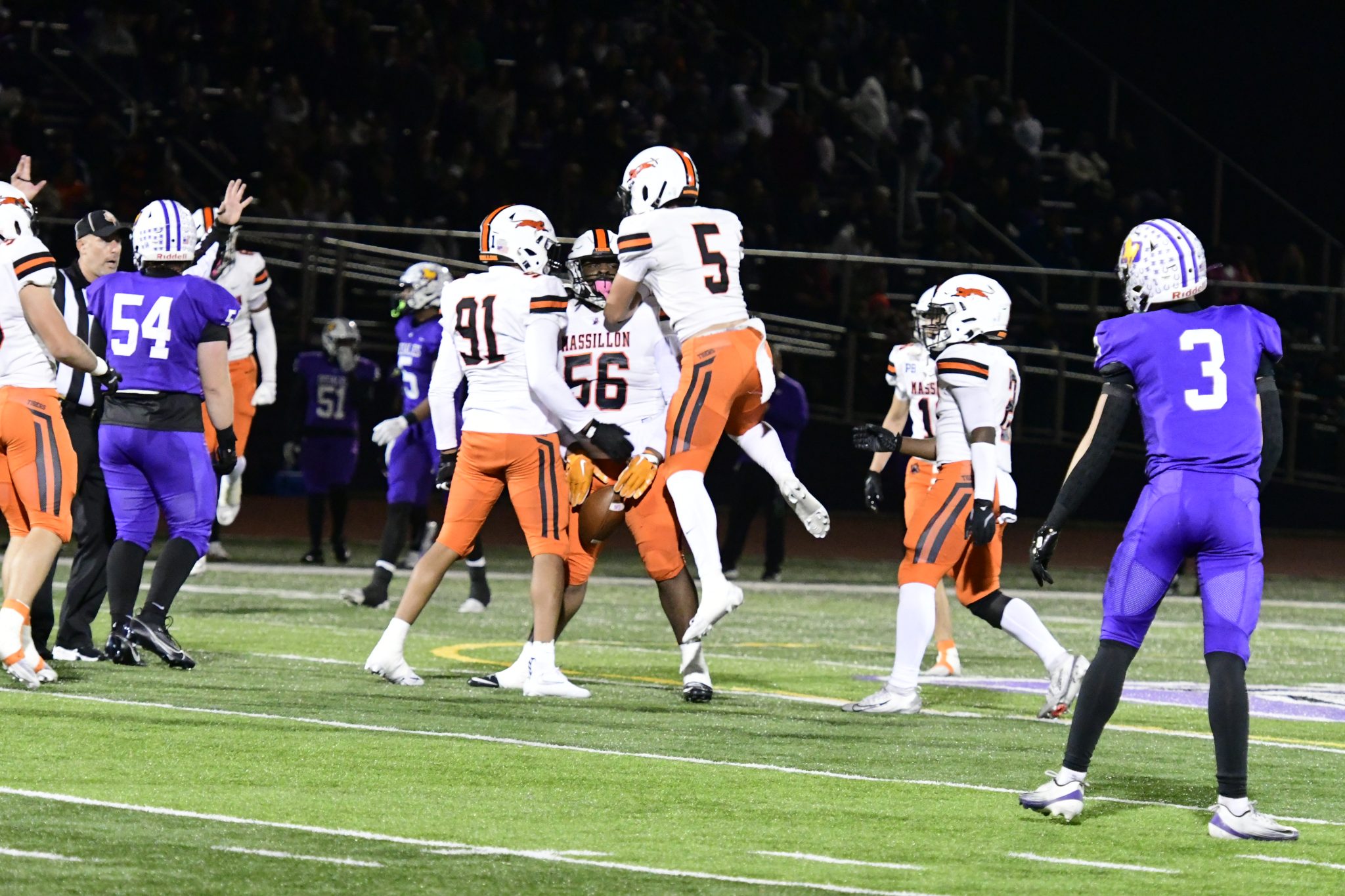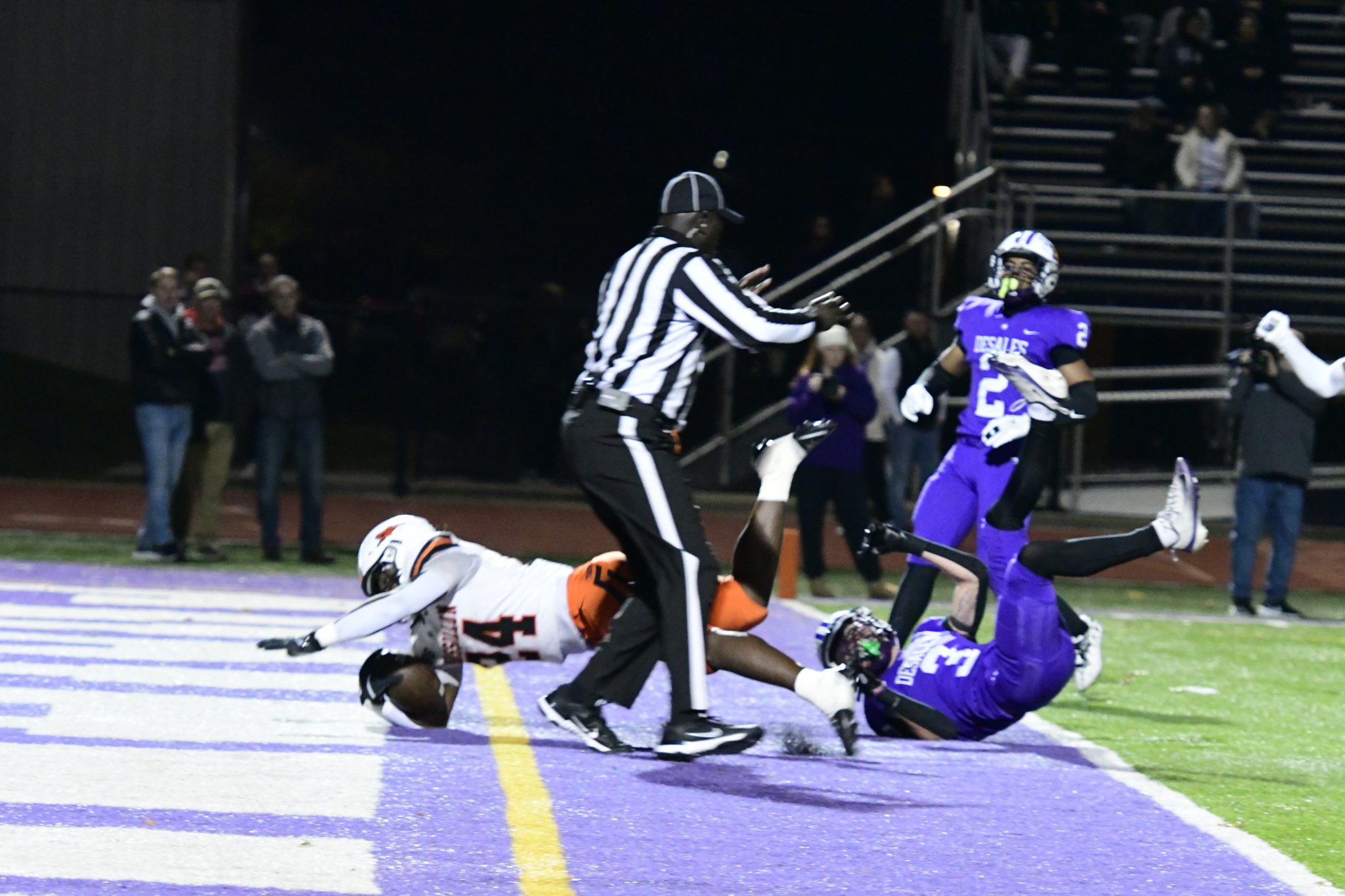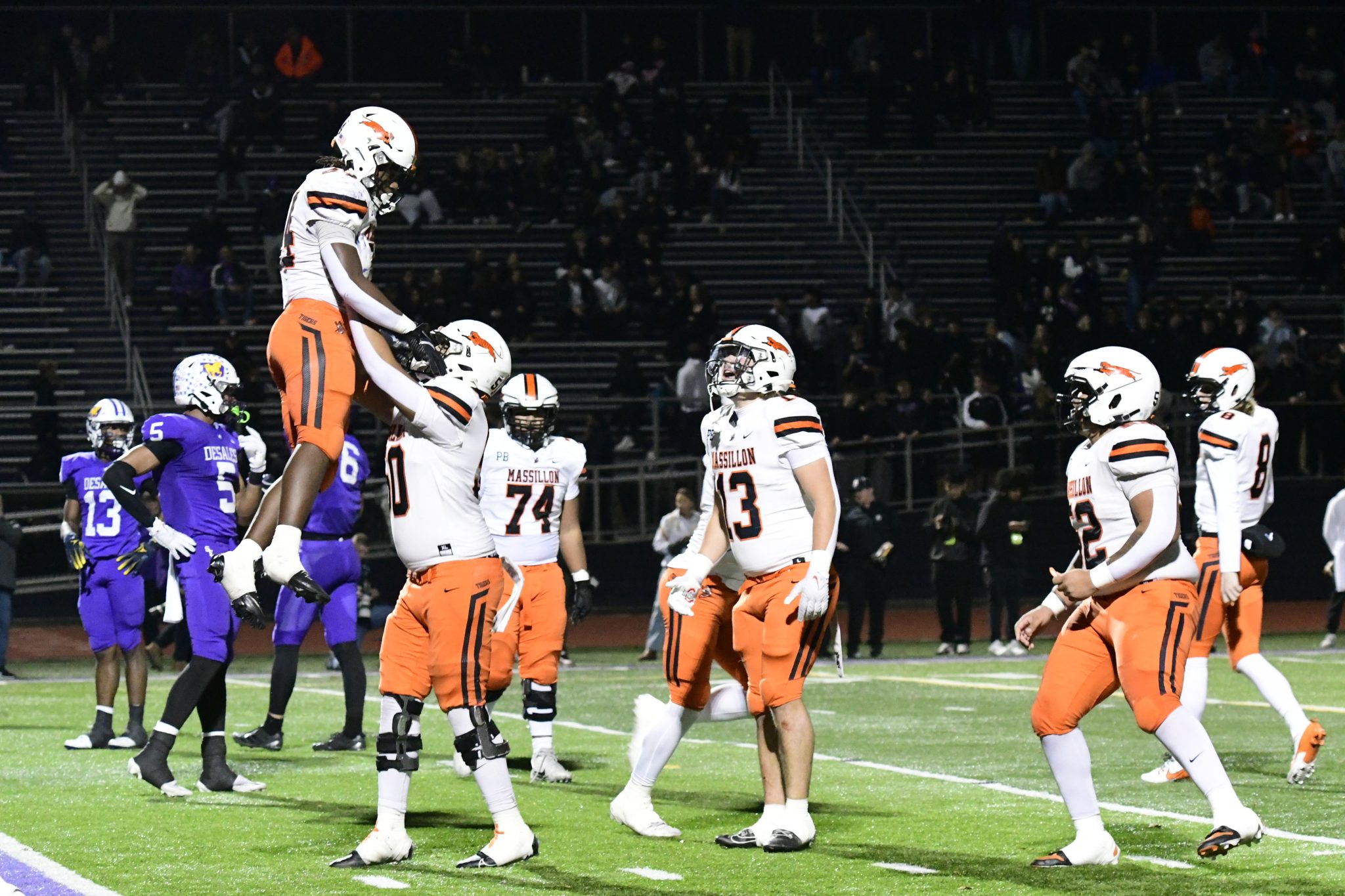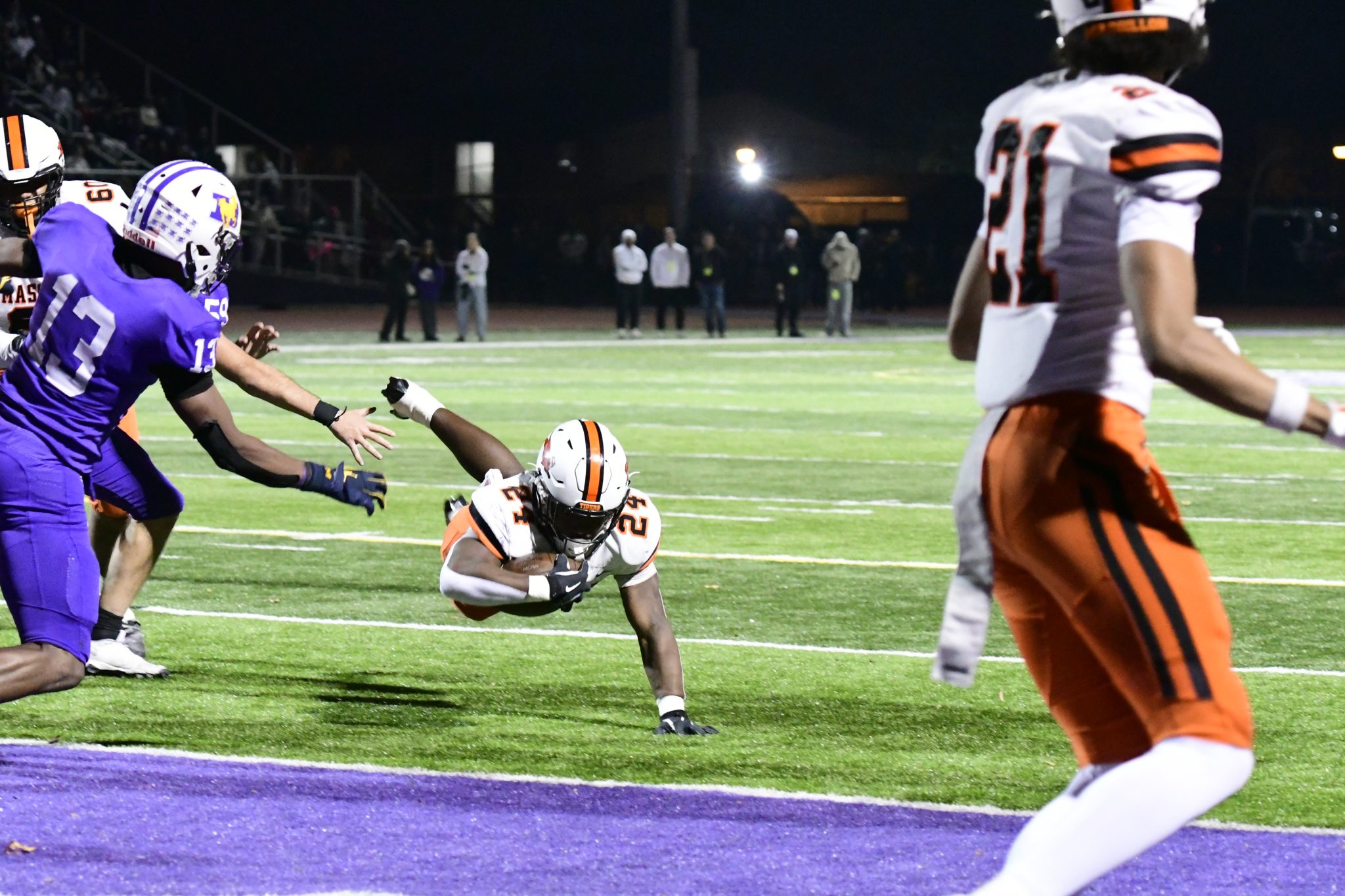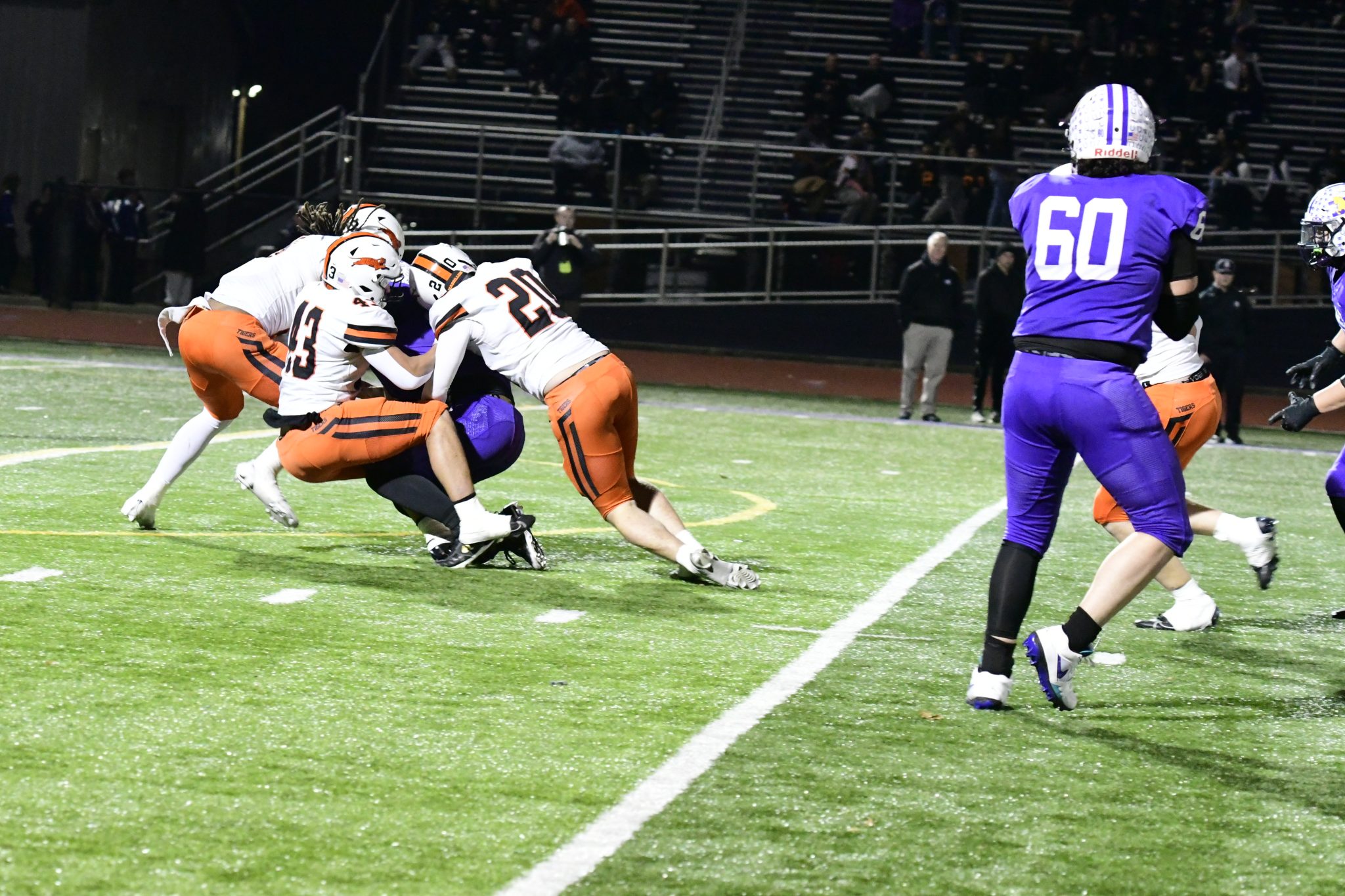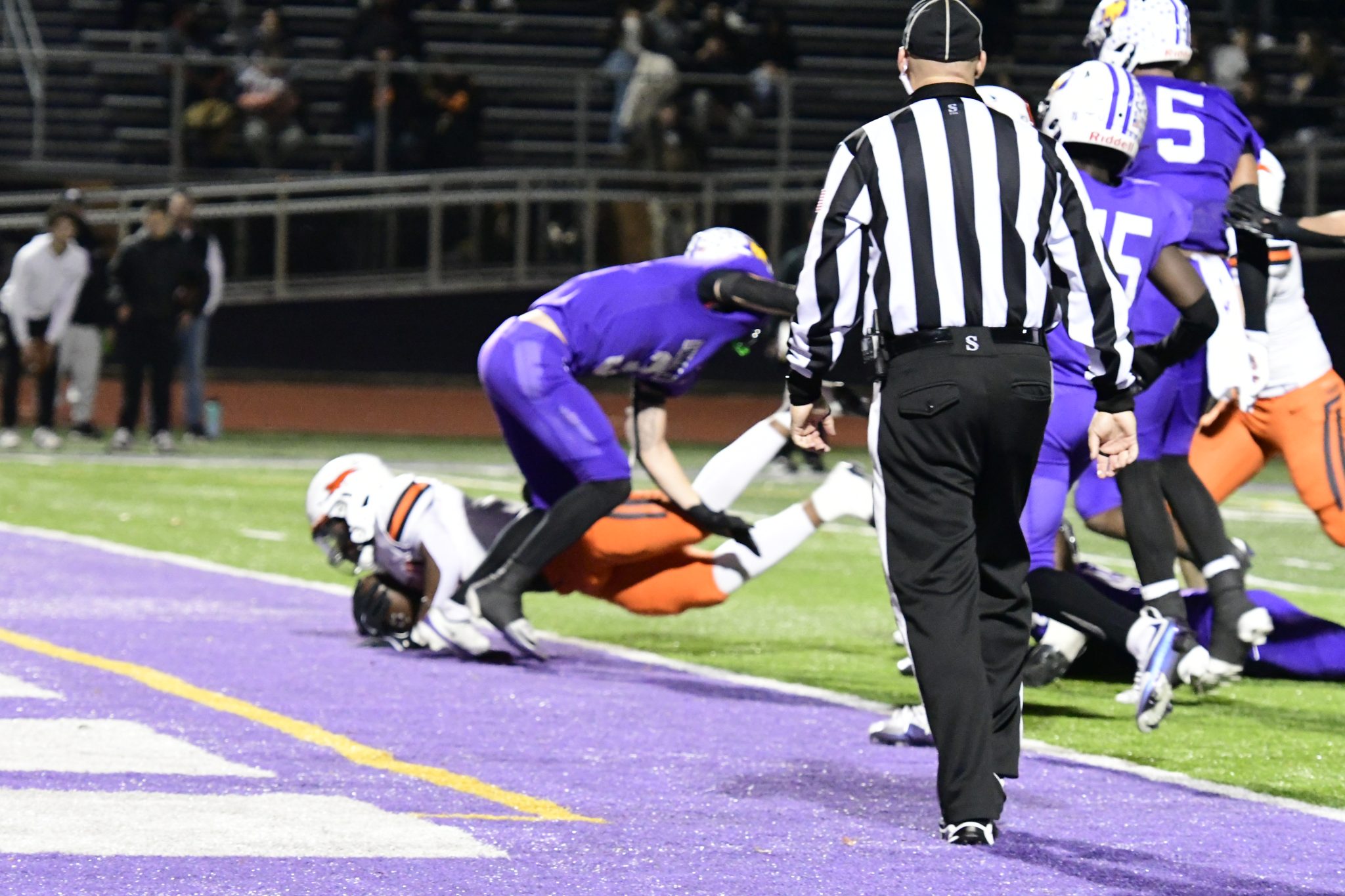
2025 Massillon Football Squad Closes the Books with Award…
2025 Massillon Football Squad Closes the Books with Award Ceremony
It was the final opportunity for coaches, parents and fans to pay one final tribute to the efforts put forth by the players of the 2025 Massillon football team. The event was held on Tuesday evening at the Washington High School auditorium.
Father Ed Gretchko was on hand once again to open the festivities with an invocation, while he spoke of the players coming together as a community to strive for a common goal.
Next up was outgoing Massillon Tiger Booster Club President Mary Lou Wilton, who was recognized as the first ever woman president of the club. Mary Lou thanked everyone for their support. “You (the players) all have made my year very, very special,” she said. Next year’s president is Jim Mutigli.
Finally, it was a turn at the mic for Coach Nate Moore, the winningest head coach in Tiger history, having just completed his 11th year at the helm. He opened by thanking everyone: players and coaches and all who contributed to the program, individuals and organizations alike.
“What a tremendous season,” he said, “I’m proud of these guys. To win nine games with the schedule we had? Ninth consecutive regional finals. Beating No. 1 Lakewood St. Edward. Complete domination of North Canton Hoover and Columbus DeSales. Nothing better than beating our rivals to the east; ten straight victories is very special and it won’t be forgotten.
“So proud of our senior class (with just 16 players at season’s end). I want to thank you guys across the board. It was a rebuilding year. And the seniors supported that effort. I love this senior class. What a fun group. I will miss you guys.
“Underclassmen, 2026 will be the Year of the Tiger. We can’t wait to get back at it. Lead, follow or get out of the way!”

Below are all the award winners:

Ja’Dyn Williams Most Valuable Player – Ja’Dyn Williams (Sr.) (1st Team All-Ohio)
- Offensive Player of the Year – Savior Owens (Jr.) (1st Team All-Ohio)
- Defensive Player of the Year – Ja’Dyn Williams (Sr.)
- Special Teams Player of the Year – Deontay Malone (Jr.) (2nd Team All-Ohio)
- Junior Varsity Offensive Player of the Year – Sabastian Harper (Jr.)
- Junior Varsity Defensive Player of the Year – Jaxson Perry (So.)
- Junior Varsity Lineman of the Year – Briar Mattox (Jr.)
- Scout Team Offensive Player of the Year – Sabastian Harper (Jr.)
- Scout Team Defensive Player of the Year – Jaxson Perry (So.)
- Scout Team Lineman of the Year – Zay-Shawn Murray (Sr.)
- Hardnose Award (previously awarded by the Touchdown Club) – Ja’Dyn Williams (Sr.)
- Carl “Ducky” Schroeder Outstanding Lineman Award – Davionne Floyd (Jr.)
- Lifter of the Year – Christian Culler (Jr.)
- Brandon Burlsworth Character Award – Anthony McMullen Jr. (Sr.)
- John Pizzino, Sr. Academic Football $1,000 Scholarship – Owen Sirgo (Sr.)
- Paul David Memorial Academic Award – Logan Allman (Sr.)
- Bob Smith / Bill Snyder Sportsmanship Award – Ja’Dyn Williams (Sr.)
- Coach Lee Tressel Citizenship Award (Sideliners) – Noah Jenkins (Sr.)
- Tom Harp Coaches’ Award – Eli Moore (Sr.)
- Nick Vrotsos Coach of the Year Award – Jeff Kent (Defensive Coordinator)
- Sam Dossous – 3rd Team All-Ohio
During the event each player was recognized by his respective position coach and also received several momentos related to his participation on the team.
In an emotional moment, Coach Moore said farewell to his son Eli with a long hug. Although Eli did not reach his goal of becoming the starting quarterback, he was highly instrumental in helping his teammates as both a player on the field and a co-captain leader off to achieve the successes that they did. For there is nothing better for a football coach than to have mentored his son in a sport that both love.
Just recently, Ja’Dyn Williams was named the recipient of the Ohio High School Football Coaches Association’s Art Teynor Award. This honor recognizes excellence in football performance, leadership, character and academic achievement. It is likened to the Mr. Football Award that is annually presented by the OHSAA to the best player in the state of Ohio.
“Ja’Dyn represents everything this award stands for,” Massillon head football coach Nate Moore said in a statement he released earlier. “He is a relentless competitor, a leader in our program, and an outstanding student. His legacy at Massillon will be the type that other great players are measured against.” A 4.0 student, Williams was also selected All-Stark County, 1st Team All-District and 1st Team All-Ohio. Next year he will attend Indiana University to both play football and continue onward with his academic career.

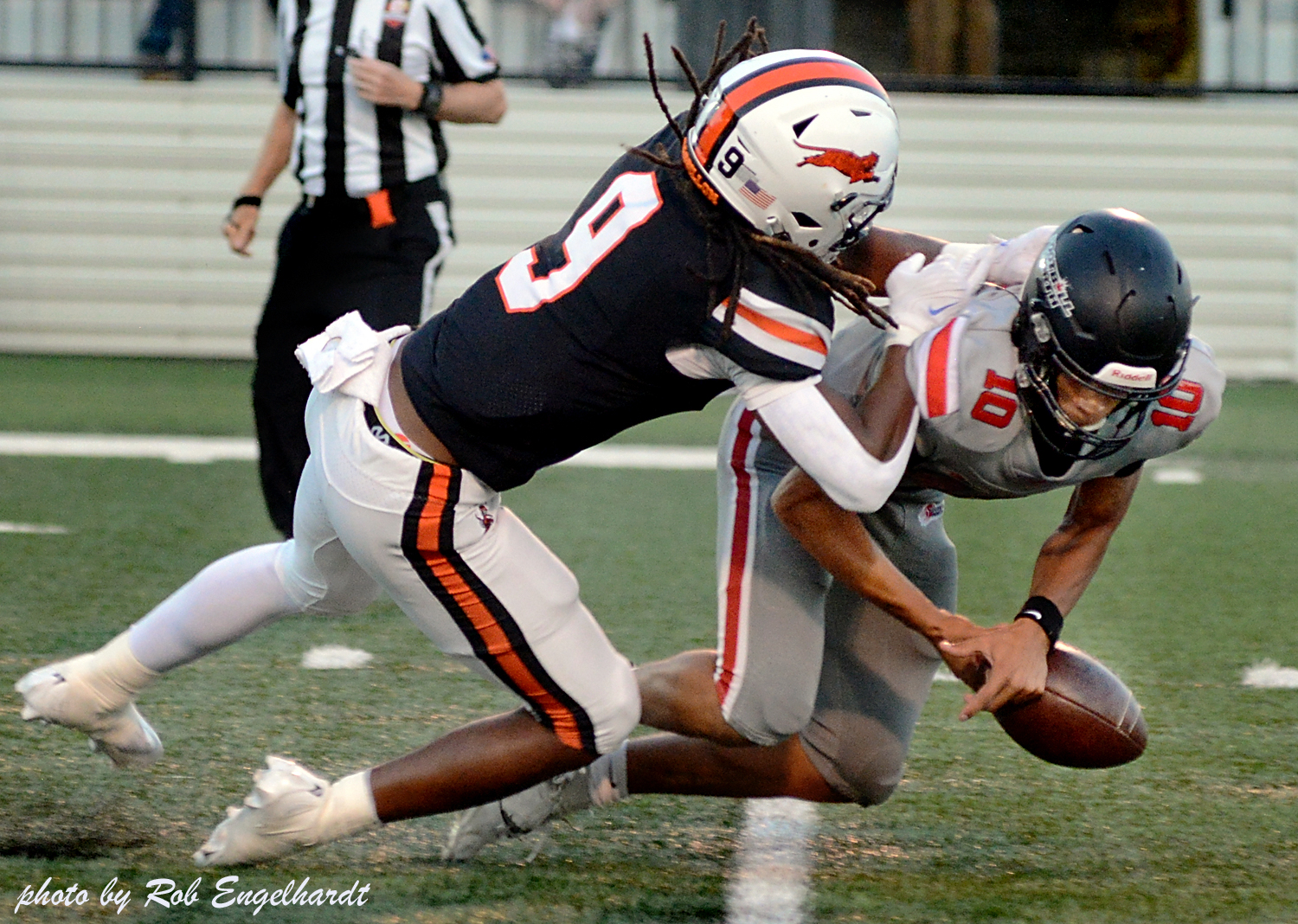
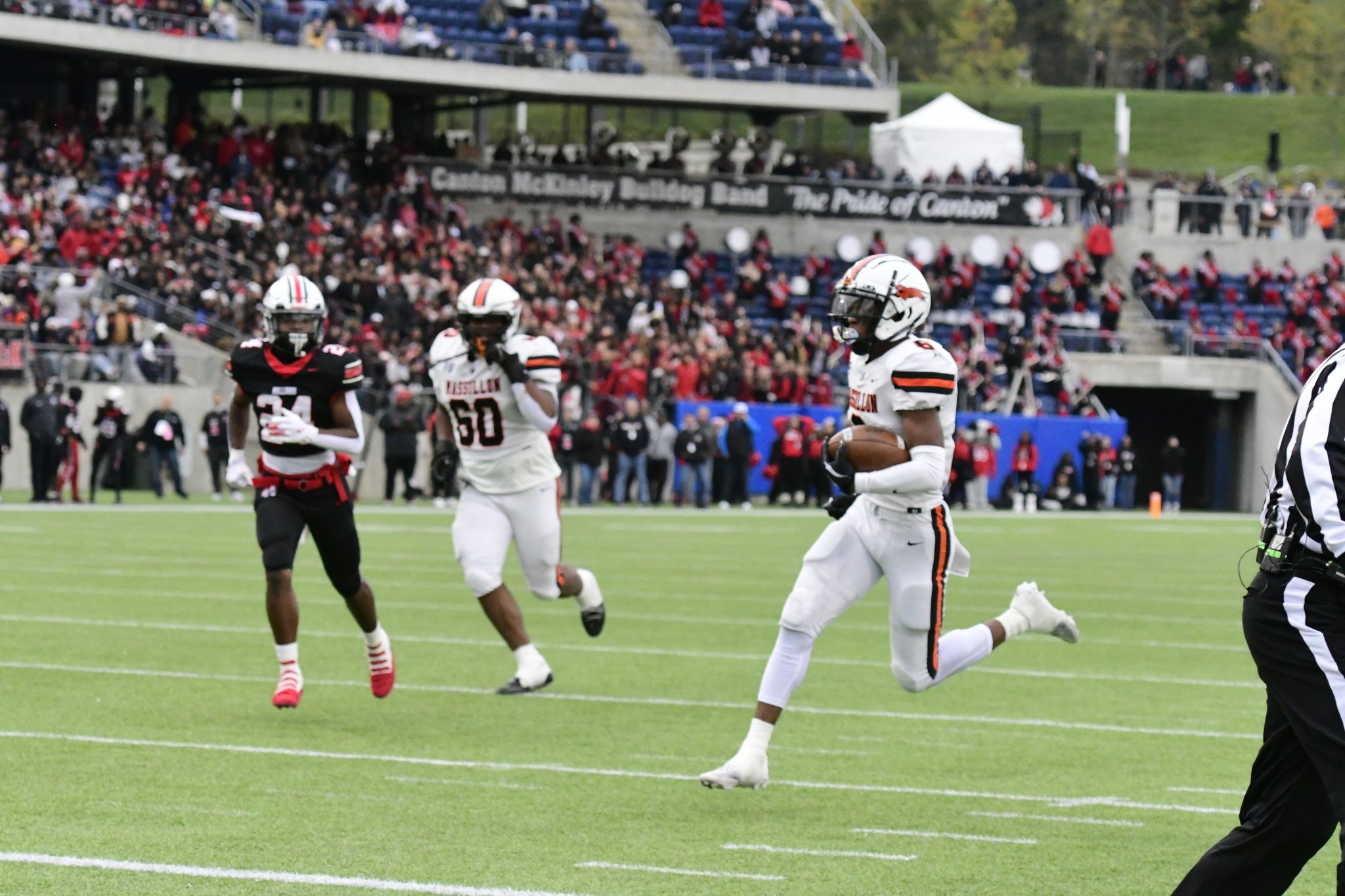
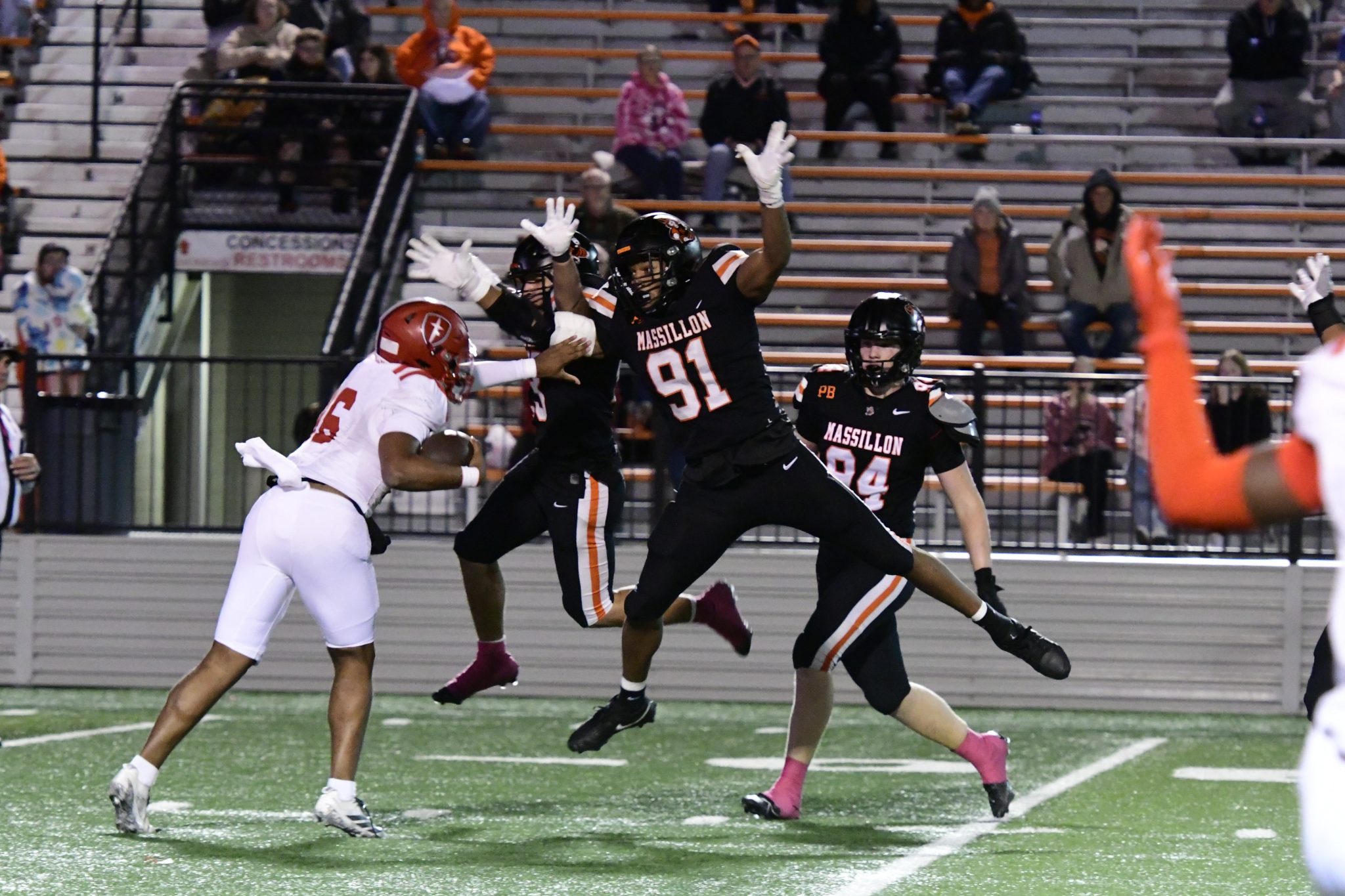





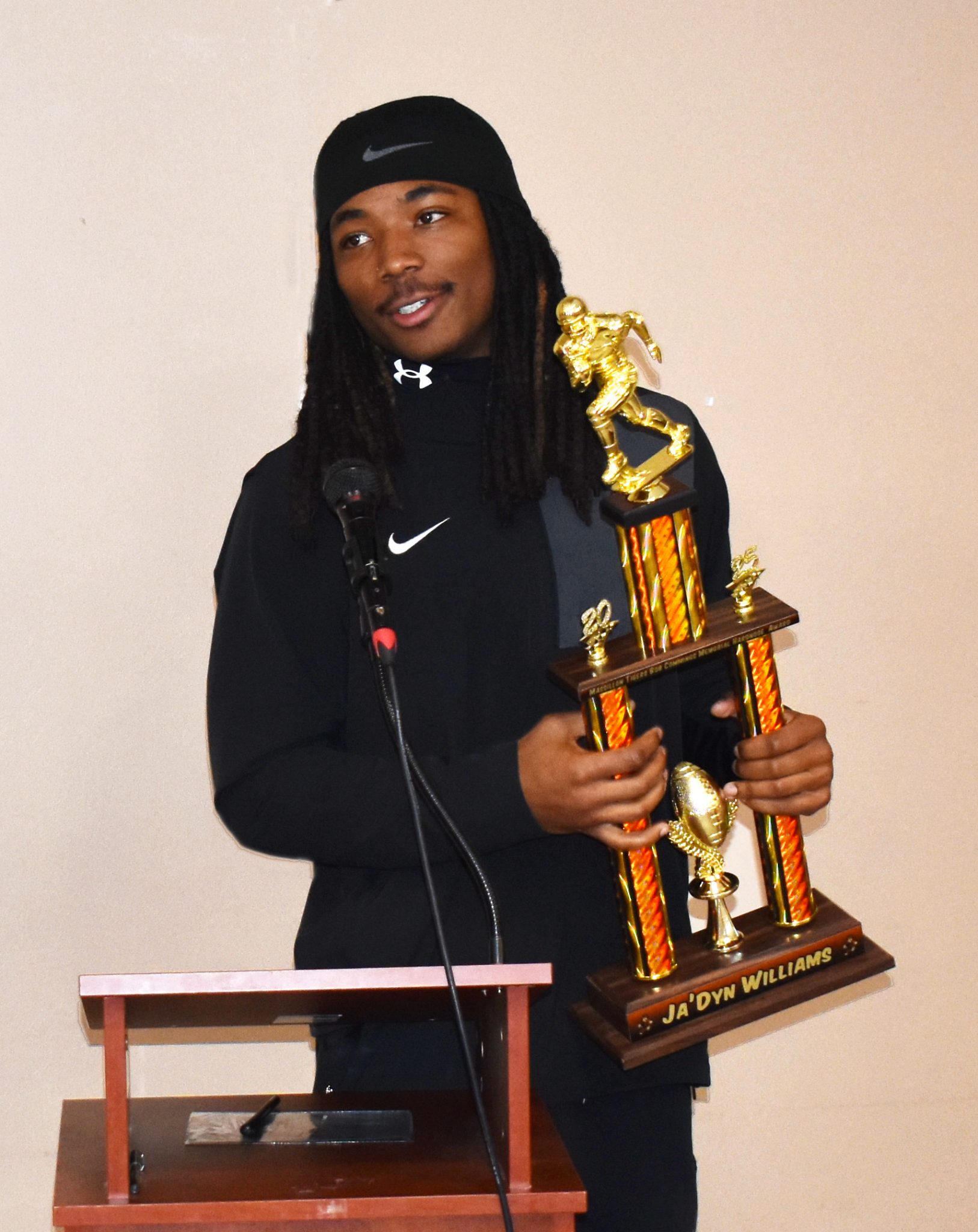 This year’s Hardnose Award winner is Ja’Dyn Williams, the outstanding linebacker who led his team to a 9-4 record and a spot in the playoff regional finals.
This year’s Hardnose Award winner is Ja’Dyn Williams, the outstanding linebacker who led his team to a 9-4 record and a spot in the playoff regional finals.

